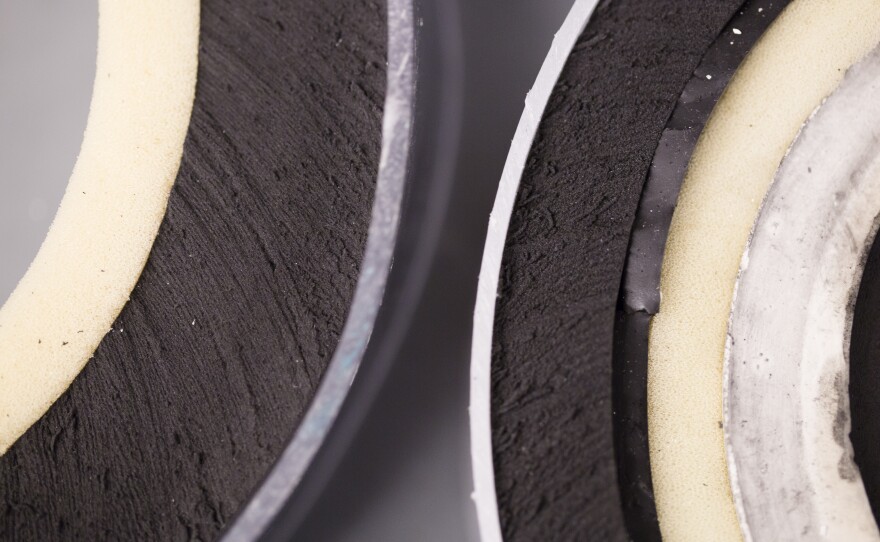Football is America’s sport. And it is, at times, dangerous. Most sports can be. But the concussions, brain trauma and their long-term side effects have become a sometimes deadly epidemic that can no longer be ignored by collegiate and national football leagues.
In September 2015, Frontline reported that researchers have identified the degenerative brain disease known as chronic traumatic encephalopathy, or CTE, in the brain tissue in 131 out of 165 people who played football professionally, semi-professionally, in college or in high school.
Universities and colleges across the country have started to dedicate money and research to innovative football safety projects:
- A team of engineers at Stanford University has been analyzing collections of data to produce better evaluations of potential protective gear
- A group of Mississippi State University students and professors has been researching a redesign of helmets that will reduce concussions by making them more biologically accurate and effective
- At the University of Washington, faculty and students of engineering and entrepreneurial backgrounds were particularly successful in the formation of VICIS, a company dedicated to commercializing their revolutionary helmet technology. And now the University of Michigan stands among these institutions.
The team of researchers at the University of Michigan School of Engineering has been developing a shock-absorbing football helmet that fights some of the damaging physics that most modern head protection technology ignores.
Helmet makers and health researchers tend to look at a variety of factors, but most focus their designs solely on the peak force they can endure. Overall, most scientists and helmet makers are still unsure of how a hit to the head translates to brain injury.

The University of Michigan project, called Mitigatium, decided to take a different approach. Researches determined that, in order for head protection to be most effective, the helmets have to protect against both force and impulse.
So what exactly is impulse?
Science defines impulse as the secondary effect of an initial force that transmits kinetic energy through a system. More simply, it's the reverberating energy that affects an object after it's hit.
Why is impulse an important consideration for football helmet makers?
Ellen Arruda, a leader of the Mitigatium team and professor at the University of Michigan's Engineering School, explained its importance in an interview with Michigan Radio:
“Our analysis of the brain and skull as a dynamic system shows us that both the impulse and the magnitude of the force can cause brain motion relative to the skull. So if the brain is moving relative to the skull, it can be slamming the skull. Or if its moving at all, or deforming at all, then that can cause injury as well. So both the force and the impulse can cause brain injury.”
Using old medical literature, a series of simulated tests, and drawing inspiration from other helmet designs, the Mitigatium team demonstrated the hidden importance of protecting against impulse.
"We looked at all these helmets and determined that when it comes to protecting the skull and mitigating force, they do well. But when it comes to lowering the impulse or removing the energy of the impact, they did very little in dissipating that energy."
“We started with the advanced combat helmet and the enhanced combat helmet that the Department of Defense had for soldiers and marines. Those are more complicated than the sports helmets, and so we looked at the sports helmets as the low-hanging fruit,” explained Arruda. “And really, the design of a football, hockey, or lacrosse helmet are fundamentally quite similar. We looked at all these helmets and determined that when it comes to protecting the skull and mitigating force, they do well. But when it comes to lowering the impulse or removing the energy of the impact, they did very little in dissipating that energy.”
In Mitigatium's experiments, the teams could tell how little the current model was doing in blocking both force and impulse by how much the speckled pattern on a brain layer was distorted.
When the Mitigatium prototype was tested, the impulse of an impact was reduced to just 20% of what went through the brain model in the current helmet model.
The video below was released by Michigan's School of Engineering earlier this year as promotion for the research team and its helmet.
https://www.youtube.com/watch?v=0Uff1iHTwFE
The University of Michigan Mitigatium team was one of five winners of the Head Health Challenge III.
The competition first began in 2013 when NFL, Under Armour, and GE teamed up to create a competition to improve the safety conditions of American football. As one of the finalists in this year’s competition, Professor Arruda and her colleagues have won a $250,000 award and another year to perfect their prototype.
Arruda expects a bright future for the Mitigatium team. In the coming year, the team plans to test other options and materials that will best mitigate impulse and force:
“Our strategy was to look for a combination of materials that is best for dissipating energy. What we entered into the competition was literally a combination of materials off the shelf of a material supply company. We purchased a bunch of them, tested them in a lab, looked at what properties they had, and tried to design a system that could do the best job with the time that we had,” Arruda explained. “So what we are looking at right now is potentially synthesizing new materials that will work better and exploring a lot more existing materials that will find an optimal combination that will be even better than what we submitted.”









